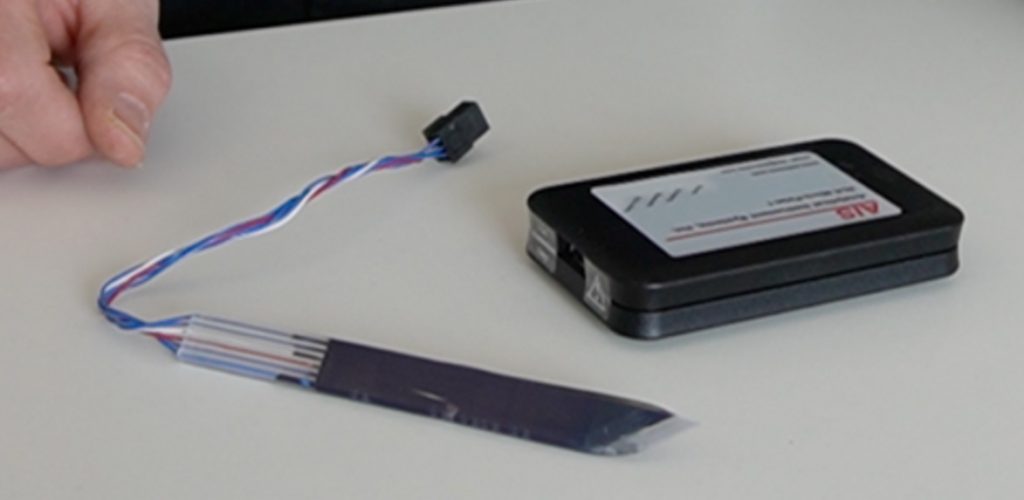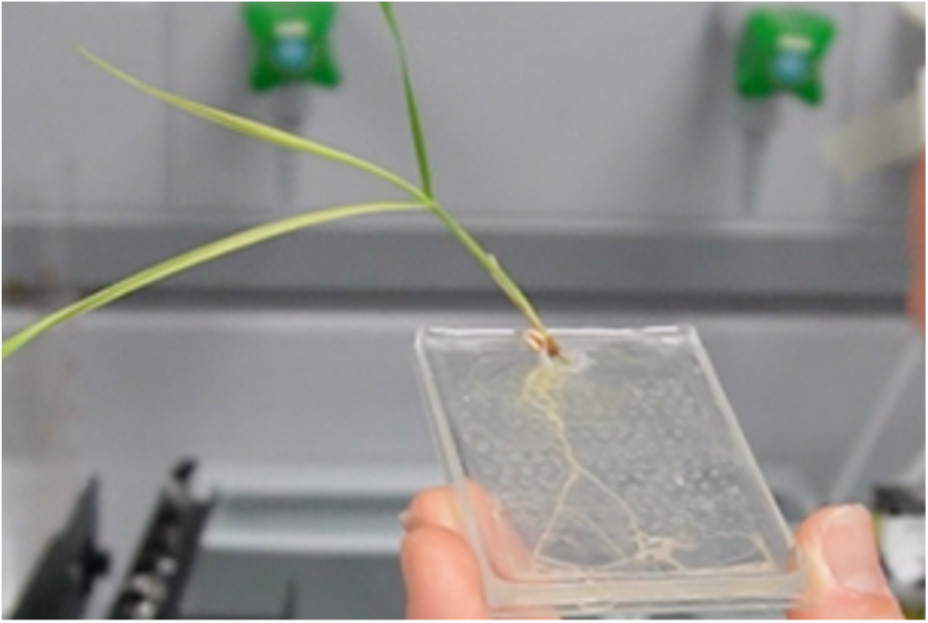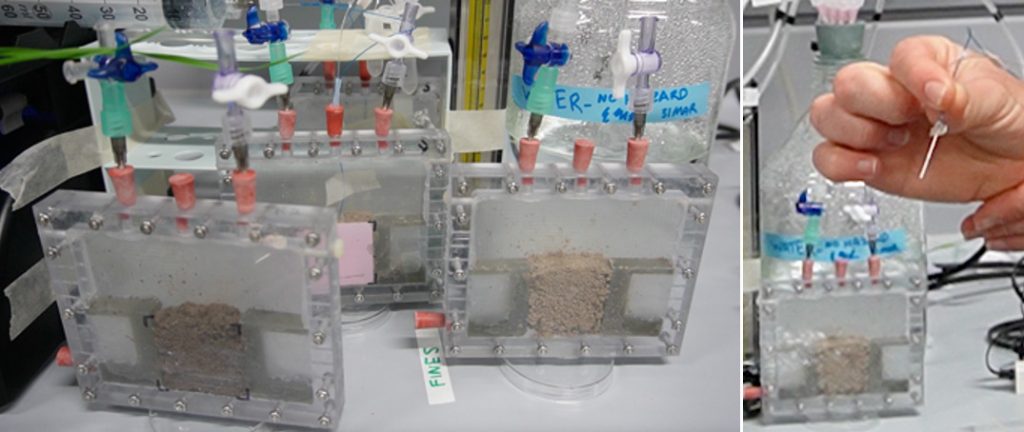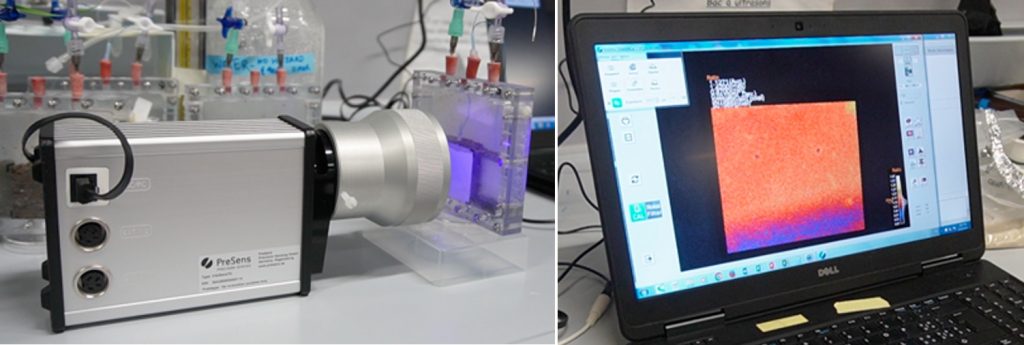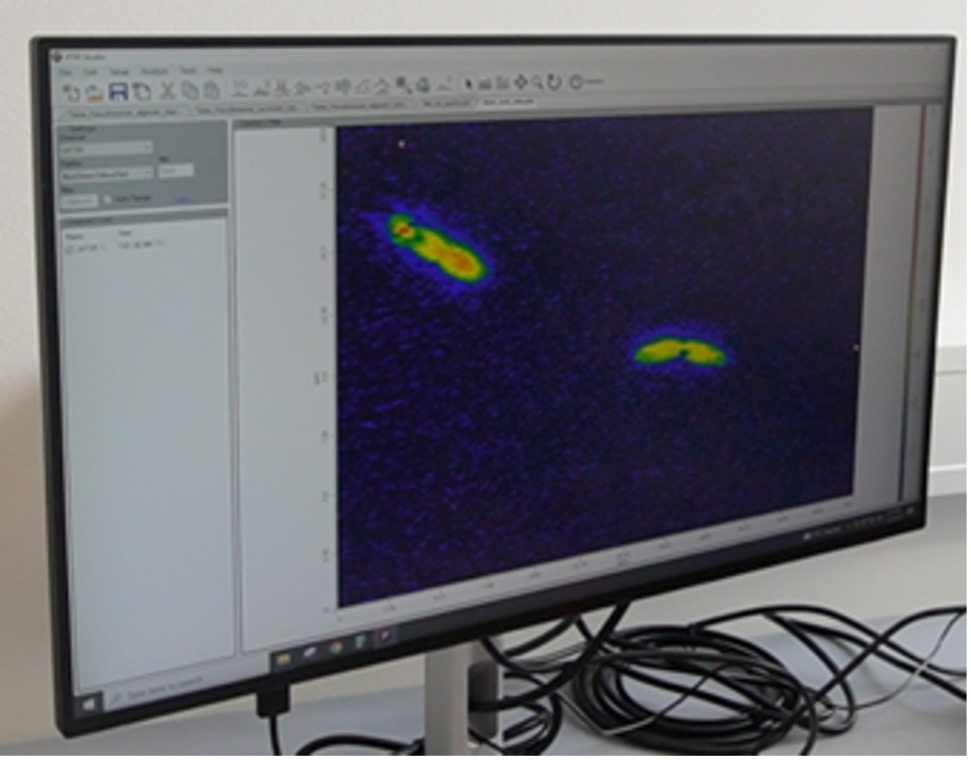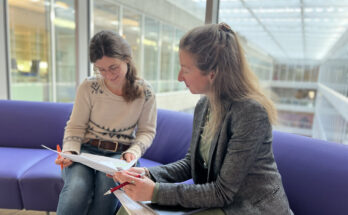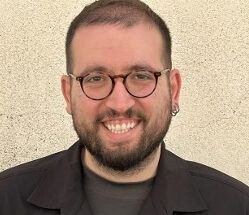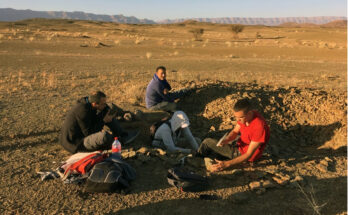Cette publication est également disponible en :
![]() Français
Français
Marco Keiluweit is a specialist expert in soil biogeochemistry who joined the Institute of Earth Surface Dynamics in July 2022. He is particularly interested in the role of soils in climate change and the global carbon cycle. His current research focuses on fundamental processes that regulate soil organic matter dynamics, which determine soil carbon sequestration and soil health. Here, he and his first assistant Emily Lacroix talk about the team’s ambitious agenda. It encompasses both the grand scale of natural environments and the microscopic intricacies at play within them. By connecting these dots, their work will pave the way for advancing our understanding of the complex interplay between soils, climate change, and sustainable agriculture.
Exploring a complex universe
Marco Keiluweit: Conducting research in soils is a challenge: they are highly complex and dynamic systems. Plants, microbes, minerals, and organic matter interact and are in a constant state of flux. My aim is to gain a better understanding of the dynamics governing soils. Isolating and describing the physical, biological, and chemical processes involved is a long-term quest.
Soils are much more than just a pile of dirt; they are teeming with life, with plants, microbes, and minerals interacting in a complex choreography. The physical, biological and chemical processes animating this dance are so intimately interwoven that it becomes difficult to isolate and study them individually.
The carbon cycle in soils is the key focus of our research. We are seeking to better understand the mechanisms that store carbon in soil or release carbon from soil. This capacity determines whether soils will accelerate or help mitigate climate change in the future. In fact, soils store around three times more carbon than the atmosphere and biosphere combined. Understanding how soil carbon cycling is affected by climate change is therefore of the utmost importance.
Beyond the environmental aspect, the study of soils is also of crucial economic interest. Agricultural fertility and productivity are closely linked to soil carbon cycling. Understanding how this precious element influences the quality of arable land paves the way for more sustainable and efficient farming practices.
From macro to microscope approaches
Marco Keiluweit: Delving into the intricate mechanisms of the carbon cycle and deciphering the impact of environmental perturbations such as climate change on these processes requires a multi-level approach. At a macroscopic level, our ultimate goal should be to tailor land management strategies to the unique characteristics of each soil type, achieving the delicate balance of optimizing plant productivity while curbing CO2 emissions.
By unravelling the intricate relationship between soil management and carbon storage in the soil, scientists hope to unlock the key to maximizing yield while minimizing the carbon footprint of agriculture.
We are also studying natural ecosystems, for example in the Alps. In alpine soils, 90% of carbon is stored in soils. We are interested in assessing how this vast soil carbon pool responds to changing snow cover. We are currently monitoring how the soil carbon cycle in these systems responds to changing snow melt dynamics in alpine regions.
Soil microelectrodes that continuously measure the chemical parameters influencing carbon cycling in soils, for example nutrient levels, oxygen content, moisture, etc. Placing several of these sensors in a field allows scientists to assess the spatial, seasonal and temporal variations in soil carbon dynamics in the field.
Marco Keiluweit: On a smaller scale, our research focuses on the rhizosphere. This is the soil zone where plant roots meet the soil. Roots release carbon compounds into the soil (sugars, organic acids), which microbes absorb, fix in the form of organic carbon, then metabolize and release in the form of CO2. A detailed understanding of these plant-microbe-soil interactions and their variations will enable us to determine under which conditions the soil will tend to store or release carbon.
A prototype for studying the root system under controlled conditions. The plant is grown in vitro in a medium contained between a glass plate and a molded polymer. It is also possible to test different factors such as nutrient and humidity levels or the presence of micro-organisms on gas transport and consumption.
Emily Lacroix: My particular interest is in anoxic microsites: pockets in which there is no oxygen. This is particularly true in the vicinity of roots. These pockets have an influence on the global carbon cycle, as microorganisms there convert organic carbon into CO2 less rapidly. My main questions are: where and how do such microsites form in the rhizosphere? Is their frequency linked to soil moisture or texture? Can we measure their influence on the soil’s capacity to fix or release CO2?
To observe the formation of anoxic pockets (microsites) in situ, Emily Lacroix inserted soil into a reactor. The same soil is mixed with quartz crystals (not very reactive) of different sizes to simulate variations in texture without changing the nature of the soil (see different colours of samples in the image on the left).
A “false root” – corresponding to a microdialysis probe (photo right) – releases carbon into the soil, just like a real plant root. Its advantage is that it allows precise control of the amount and type of carbon released into the soil.
The soil’s moisture content can also be modified to identify its potential influence on the formation of anoxic pockets.
At the end of the experiment, Emily Lacroix measures the oxygen level and its distribution in the sample: a chemical foil reacts to the presence of indicator oxygen (pink square on the left image). This paper is then exposed to a camera equipped with a UV lamp (central image). On the screen, oxygen-rich areas appear orange-red and anoxic areas yellow-green (right image). In this way, it is possible to quickly identify the distribution and number of anoxic zones in the vicinity of a root.
Marco Keiluweit: Finally, on a microscopic scale, we analyse soil samples using a cutting-edge, high-resolution infrared microscope. Its high level of resolution enables us to describe the interactions of organic matter, minerals or microbes in our samples.
Characterizing the associations of microbes and minerals in soil samples is one of the feats made possible by the infrared microscope. The resolution of this microscope makes it possible to distinguish different types of soil organic matter (dead or alive) and minerals in soil samples.
This is the only infrared microscopes of this kind in Switzerland and has a rapidly growing user base FGSE as well as at other institutions in the fields of geosciences, microbiology and engineering.
The Road Ahead: Linking fine scale mechanisms to macroscopic observations
Marco Keiluweit: Our aim is to better predict how soils respond to climate change going forward. And we can only improve our predictions of this response by linking macroscopic observations of change to microscopic mechanisms. We have seen a rapid advance in our understanding of soil carbon dynamics in recent years, which makes me hopeful that we will be better equipped to address the mounting pressures on our soils arising from climate change and intensification of land use in the future
Emily Lacroix: I hope that my first experiments under controlled conditions will be conclusive, so that I can measure the formation of anoxic pockets (microsites) close to real roots under real conditions. With successful results, I aim to conduct measurements that will enhance our understanding of how these crucial processes influence soil carbon dynamics.
Pour en savoir plus
- Retrouvez le site du groupe Soil Biogeochemistry
